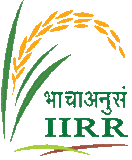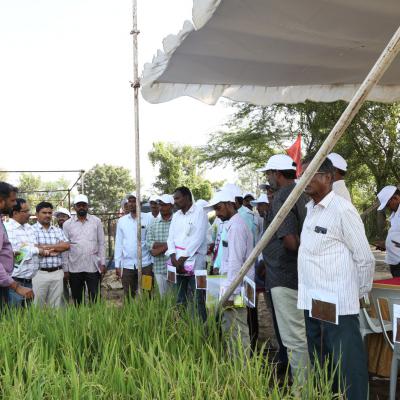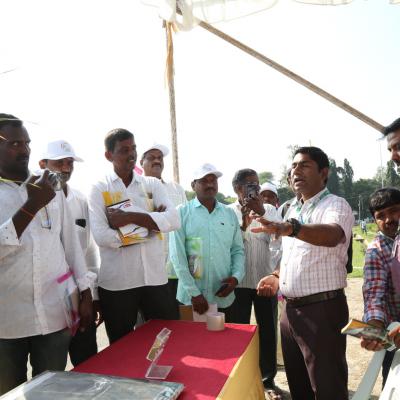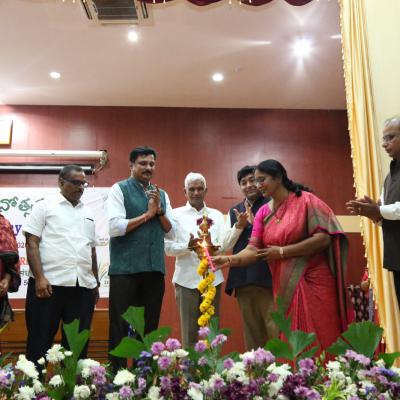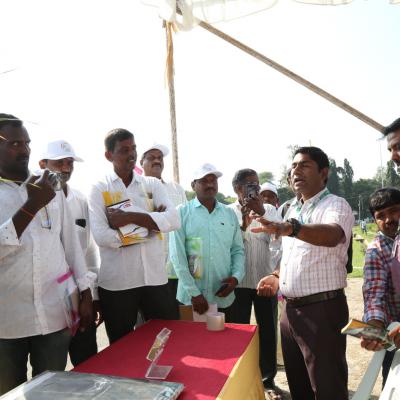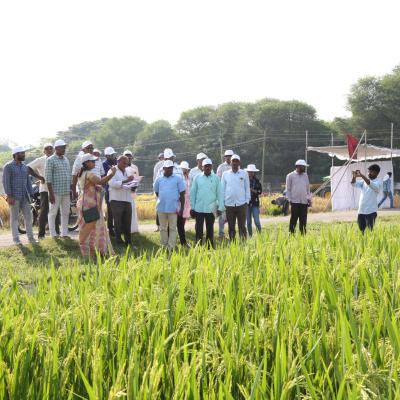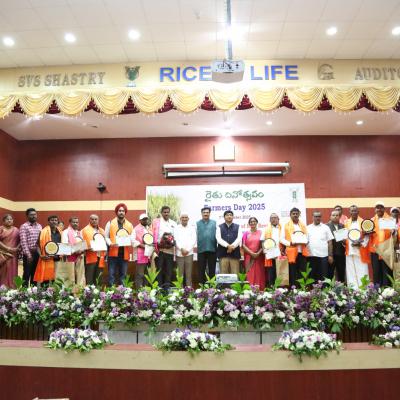Director Message
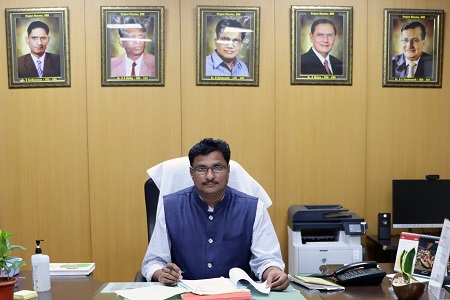
It is a privilege for me to be appointed as the Director of this Crop institute bestowed with the responsibility of coordinating the world’s largest network on Rice research with 45 funded centres and around 100 voluntary centres, involving more than 300 rice scientists, besides the responsibility pursuing lead research related to Irrigated rice ecosystem.
Rice is the staple food for more than two thirds of Indian population contributing to 40 % to the total food grain production thereby, occupying a pivotal role in the food and livelihood security of the people. In terms of area rice crop is grown in about 47 million hectares (m ha) in the country, which is the largest acreage in the world. The last sixty years have seen a paradigm shift from subsistence agriculture to technology driven intensive farming which has taken the country from the days of food deficit to an era of self-sufficiency. In spite of the unfavourable conditions due to climate change, the country was able to achieve record rice productions year after year confirming the resilience in our latest rice varieties. This year (2024-25) we achieved an estimated record production of 150 million tons surpassing China to be the Global First. This has been largely due to cultivation of HYVs and hybrids as well as adoption of improved crop management practices. Many of the released varieties possess resistance / tolerance to major pests, diseases and nutrient efficient. All this was possible due to the concentrated efforts through AICRPR, Coordination with other agencies and Farmers hard work.
In the last two decades India has steadily increased its export potential and now gained supremacy by becoming world No.1 exporter of rice since 2011 exporting more than 20 million tonnes of rice earning more than 70000 crore rupees in foreign exchange every year.
Despite these achievements, we still need to produce an additional 1.5-2 million tonnes of milled rice every year with decreasing area under rice to meet the target of 180 million tonnes by 2050. Simultaneously, we need to give renewed focus on nutritional security in rice through bio-fortification. This has to be achieved in the context of increasing incidence of pests and diseases and other abiotic stresses due to a rapidly changing climate, rapidly declining water, and soil and land resources. The key areas of rice research should include identification and utilization of novel gene sources for breeding multiple biotic stress tolerant rice varieties, gainful exploitation of rice genome sequence information through development of novel and breeder-friendly molecular markers for breeding varieties possessing multiple traits of agronomic importance, bio fortification of rice to enhance its nutritional profile, studies on improving rice grain quality, addressing climate change related issues, coordinated evaluation and utilization of rice germplasm, breeding drought, salinity, submergence tolerant rice varieties, development and demonstration of labour saving technologies and in futuristic research areas like conversion of rice from a C3 to C4 photosynthetic crop, improving biological nitrogen fixation in the rice ecosystem, utilization of genomic tools for enhancing yield. These challenges can be addressed in the right perspective through the application of science and technology in partnership with National and International rice research centres in public-private partnership mode
The Consortia Research Platforms (CRP) on Bio fortification, Hybrid technology, Agro-biodiversity, Molecular breeding and Incentivizing research and 60 other externally funded projects presently in operation in the Institute are the right platforms to sustain the research outputs to improve the productivity. In recent times, we have received Eight Copyrights and four patents for our technologies. applications, registered 79 genetic stocks, commercialised our technologies with more than 30 Pvt companies and our scientific research published in more than 100 reputed journals of high impact every year.
The progress on the research front has highlighted several future targets and also constraints, which need to be addressed in the right perspective in a coordinated manner with the support of our AICRPR partners, whose unstinted support is highly appreciated. ICAR-IIRR has evolved a ten point strategy to overcome and achieve the targets envisaged in Vision 2050 document. The support and cooperation from SAUs, AICRPR centres and sister ICAR institutes is sought to pursue a holistic approach for achieving food and nutritional security along with climate resilience contributing towards Viksit Bharat by 2047.
Dr. R. M. Sundaram
(Director)
